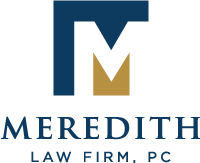Probate in Texas is normally not that difficult. However, it is kind of like elective surgery; it is not absolutely necessary and it costs money. In addition, Probate is a public process. This means that if your estate goes through Probate, anyone can go to the courthouse and obtain a copy of your Will. Furthermore, in Texas, they can also obtain a copy of the Inventory of the assets in your Estate. The inventory will not only list the assets in your estate, but the values of those assets on the date of your death. So, anyone can find out what you owned, what it was worth, and who you left it to.
Therfore, it is fitting to discuss ways that individuals and couples can avoid Probate. There are four common ways that we can structure your estate plan to avoid probate. Assets held under these strategies are considered “non-probate assets” and therefore bypass probate.
1. Joint Tenancy With Right of Survivorship
Under property law, if a piece of property or a personal asset is held with another person or persons and there is a “right of survivorship”, when one person passes away the other owner or owners simply assume the deceased person’s interest. For example, if George, Paul, Ringo, and Jon own a yellow submarine as joint tenants with right of survivorship, then each person owns ¼ of the submarine. If Jon passes away, his interest is split between the remaining owners. Therefore, George, Paul, and Ringo now each own 1/3 of the yellow submarine.
2. Designated Beneficiary
For many people, their largest assets, such as life insurance policies, IRAs, Mutual Funds, 401(k), or other qualified plans are will not pass under their Will. This is because these assets will pass to the beneficiary(ies) named on the Beneficiary Designation form. This form is a contract between the account or policy owner and the insurance company or retirement plan custodian. The contract says that upon the account or policy owner’s death, the company or custodian agrees to pay the death benefit or balance of the account to those the Decedent named as beneficiaries.
Typically, the Decedent has named a primary beneficiary and one or more contingent beneficiaries. The contingent/secondary beneficiary(ies) will not receive anything unless the primary beneficiary is also deceased at the time payment is to be made. However, if the Decedent has named the “Estate” as a primary beneficiary, then the insurance company or custodian will pay the funds to the Estate of the Decedent. This means, the insurance policy or account has just become a probate assets and probate will be necessary.
3. POD (Pay-On-Death) or TOD (Transfer-On-Death) Accounts
Some banks and financial institutions allow accounts to have a POD or TOD designation on them. For example, assume Tom Client has an account with a POD designation on it, and he names his wife, Cindy, as the POD designee. Upon Tom’s death, the balance of the account will pay to Cindy and she now owns any remaining funds in the account.
4. Revocable Living Trust
This is the most popular method of avoiding probate. Here, the Grantor of the trust is able to re-title his assets in the name of their revocable trust. Now since the Trust owns all of the assets, upon the Grantor’s death, probate is not necessary because the trustee of the trust is managing the assets according to the terms of the trust.
